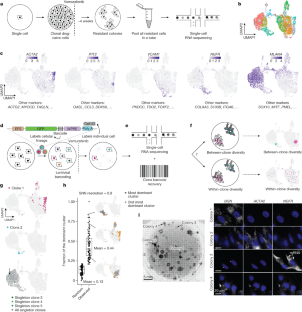特徴的な脳波パターンから、全身麻酔下の患者の意識状態が必要以上に深いことがわかる。 Distinctive EEG patterns indicate when a patient’s state of unconsciousness under general anesthesia is more profound than necessary.
2023-07-17 マサチューセッツ工科大学(MIT)
◆研究により、アルファ波の振幅変調やスローやデルタ波の周波数変化がバーストサプレッションに関連していることが明らかになりました。これにより、患者の無意識の状態をより精密にコントロールする手段が提供される可能性があります。
<関連情報>
- https://news.mit.edu/2023/study-finds-tracking-brain-waves-could-reduce-post-complications-0717
- https://www.pnas.org/doi/10.1073/pnas.2300058120
調節ダイナミクスは、麻酔による無意識状態間の移行を示す。 Modulatory dynamics mark the transition between anesthetic states of unconsciousness
Elie Adam, Ohyoon Kwon, Karla A. Montejo, and Emery N. Brown
Proceedings of the National Academy of Sciences Published:July 19, 2023
DOI:https://doi.org/10.1073/pnas.2300058120

Significance
During unconsciousness maintained by GABAergic anesthetics (propofol and sevoflurane), the typical electroencephalogram signatures are slow-delta oscillations (0.3 to 4 Hz) and alpha oscillations (8 to 14 Hz) that at higher doses devolve into burst suppression, a marker of profound brain inactivation. The dynamics of the transition between these states of unconsciousness remain uncharacterized. We report alpha-wave-amplitude and slow-wave-frequency modulatory processes that track continuously the transition between these states in humans anesthetized with either propofol or sevoflurane. Our biophysical model attributes these modulatory dynamics to the combined neurophysiological and metabolic effects of these anesthetics on brain circuits. Our findings offer insights into the mechanisms of these agents and strategies for monitoring and precisely controlling unconsciousness in patients under general anesthesia.
Abstract
Unconsciousness maintained by GABAergic anesthetics, such as propofol and sevoflurane, is characterized by slow-delta oscillations (0.3 to 4 Hz) and alpha oscillations (8 to 14 Hz) that are readily visible in the electroencephalogram. At higher doses, these slow-delta–alpha (SDA) oscillations transition into burst suppression. This is a marker of a state of profound brain inactivation during which isoelectric (flatline) periods alternate with periods of the SDA patterns present at lower doses. While the SDA and burst suppression patterns have been analyzed separately, the transition from one to the other has not. Using state–space methods, we characterize the dynamic evolution of brain activity from SDA to burst suppression and back during unconsciousness maintained with propofol or sevoflurane in volunteer subjects and surgical patients. We uncover two dynamical processes that continuously modulate the SDA oscillations: alpha-wave amplitude and slow-wave frequency modulation. We present an alpha modulation index and a slow modulation index which characterize how these processes track the transition from SDA oscillations to burst suppression and back to SDA oscillations as a function of increasing and decreasing anesthetic doses, respectively. Our biophysical model reveals that these dynamics track the combined evolution of the neurophysiological and metabolic effects of a GABAergic anesthetic on brain circuits. Our characterization of the modulatory dynamics mediated by GABAergic anesthetics offers insights into the mechanisms of these agents and strategies for monitoring and precisely controlling the level of unconsciousness in patients under general anesthesia.


